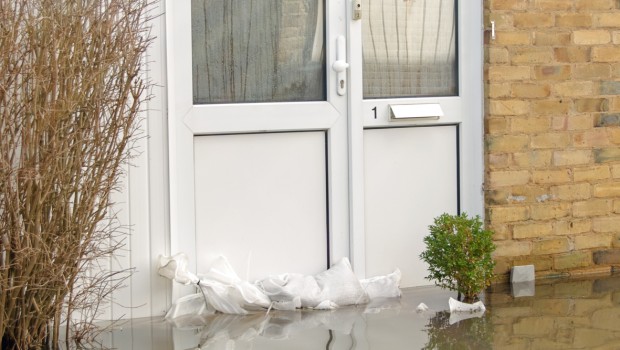Opinion The perils and pitfalls of flood proofing your home
In a remarkable change of fortune for hard pressed homeowners, March’s budget contained some good news. If, like me, you have been flooded twice in the past 7 years and really don’t want to go through it all again, you will have been gratified to hear that up to £5000 per affected household is being made available to install flood proofing measures. This is actually a very pragmatic proposal. When you consider that the Environment Agency is proposing to spend £10 million protecting 100 houses in the Somerset Levels, £5000 per property seems like a bit of a bargain. In my own town 250 properties were flooded last summer. Assuming every single affected home claimed all of the grant, the government would be on the hook for £1.25 million. I don’t know, but I would imagine that the cost of building storage ponds, installing storm drains and raising bridges would be considerably more than that. It makes sense to protect individual properties, rather than a whole town.
Making your property flood proof is actually quite straightforward in this day and age. In the case of my house, I need to protect two doors, one airbrick and a vent for the tumble dryer. Waterproof covers for the vent and airbrick cost about £30 each and flood barriers to protect the doors are widely available and cost between £200 and £400. Worst case scenario, £860 all done! But sadly, it is not that simple. All these devices must be fitted in advance of the flooding; you can’t have them in situ all the time. This wasn’t a problem in the case of the flooding along the Thames back in February; the flood wardens had 2 or 3 days to warn the householders to put the barriers in place. But in my town, it doesn’t work that way. We suffer from flash flooding following a torrential downpour; the drainage system simply can’t cope with the volume of water. Last time we flooded, a steady stream of water was pouring under our front door within ten minutes of the first drop of rain falling; within 90 minutes the house was surrounded by three feet of water. There was no warning.
Evidently, what I need are passive flood protection measures, things that are in place all the time. I’m happy to say that such things are available in the form of flood doors – shut the door and the house is watertight; that’s the theory anyway. But all is not as straightforward as it seems. To make the door watertight, 12 bars must be locked into place to seal the door tight against the frame and you have to be in the house to do this. If you’ve popped out to the shops, the house isn’t flood proof. There is also the small matter of the cost, about £6000 to fit two doors! Just to add to the fun, my house is Grade II listed, which means that I have to get Listed Building Consent before I can do anything, a process that will doubtless take a lot of time and involve jumping through many hoops. Oh, I forgot to mention, I couldn’t find a manufacturer that would actually guarantee that its doors are watertight, particularly with three feet of floodwater on the other side.
It strikes me that there is an opportunity here for a British business to invest some money in design and technology to create a range of flood prevention products that are attractive, fit for purpose and competitively priced. Given that the government will be paying for many of these products through flood grants, they might have a vested interest in providing a bit of finance for such a business. Perhaps they might also consider speaking to the conservation department and smoothing the path for listed building owners who want to protect their properties from flooding, but I’m not holding my breath. Expect to see me on Dragon’s Den showcasing my patented flood proof door very soon.






Comments